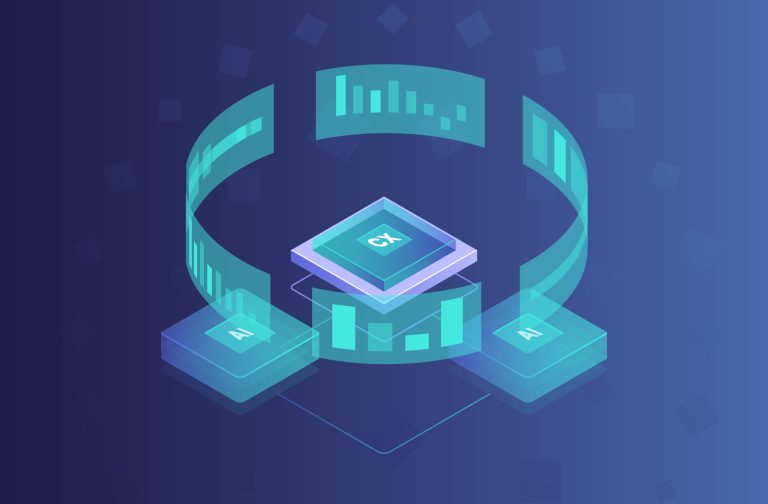
Establishing a Customer Journey Map: Implementation, Advantages, and Enhancing Customer Experience
Every organization aiming to enhance its customer experience must grasp and adapt to the customer journey it offers, whether it is entirely online, partially online, or a combination of both. This is crucial because customers go through various journeys, and comprehending their experiences is essential to identify and address their pain points and requirements, ultimately leading to a delightful and valuable customer experience.
To effectively define and understand the customer journey. it is imperative to have a clear understanding of the elements of a customer journey map. This map encompasses the stages from the initial introduction of the product or service to the moment when customers derive benefits from it and potentially return for future interactions. However, prior to delving into the specifics, it is essential to grasp the concept of a customer journey map. What precisely is it, how do we create one, how do they contribute to improving the customer experience, and what benefits do they bring to the brand?
What is a Customer Journey Map?
A customer journey map serves as a visual representation of the customer’s interactions and experiences with a brand. It offers valuable insights into the needs of potential customers at each stage of their journey and identifies the factors that directly or indirectly influence their progress or hinder it.
Moreover, a customer journey map uncovers customer insights that might otherwise remain unknown to an organization. Brands utilize the information provided by the customer journey map to enhance the overall customer experience, increase customer engagement, retain existing customers, and fulfill their needs effectively.
The customer journey typically comprises five key stages:
- Awareness: This stage marks the point at which a potential customer becomes acquainted with a product or service. often through advertising or word-of-mouth marketing.
- Search: Once aware of the product or service. the customer actively seeks out more information about what the brand can offer.
- Evaluation: In this stage, customers evaluate the product or service based on testimonials. blog posts, social media, and other sources to determine if it surpasses similar offerings and meets their needs.
- Purchasing: After conducting research and considering other customers’ opinions. the customer decides whether to make a purchase from the brand or opt for a competitor.
- Experience: Once the customer has made a purchase decision and tried the product or service. they may choose to share their experience or provide feedback. which contributes to the continuation of the customer journey.
The Key Steps to Mapping the Customer Journey
So, To develop a customer journey map, the process involves several steps, outlined as follows:
Step One: Create a Customer Persona for Testing
To gain a comprehensive understanding of the customer journey, it is crucial to conduct research and create a customer persona. This persona represents a typical customer and can be based on frequent or high-spending clients. as well as potential new customers the organization has yet to engage with.
This persona goes beyond the marketing department and serves as a valuable starting point for the journey mapping process. The persona includes various characteristics such as:
- Name
- Age
- Job
- Family status
- Career goals
- Personal goals
Creating this persona helps develop a deeper understanding of customers. which can be obtained through statistical data. demographic insights. and the use of measurement tools like Lucidya services. Social listening and channel analysis can also provide valuable data, along with conducting personal customer interviews.
Furthermore, when preparing a customer journey map. it is essential to form a diverse mapping team that represents various departments within the organization. This team should include frontline staff, day-to-day managers, human resources personnel, and support functions. Each member will contribute valuable feedback, insights, and perspectives to shape the action plan effectively.
Step Two: Select the Customer Journey to Map
This phase involves identifying the specific customer journey that will be mapped and defining the sequence of actions within that journey. It could be focused on a new customer onboarding process, a renewal journey, or addressing a product-related issue. The selection can be based on the most frequent or profitable customer journeys.
Step Three: Work on Mapping
During this stage, several key questions should be addressed:
- Who are the individuals involved in this journey? For instance, in the context of a car agency, it might include customers, salespersons, and employees.
- What processes or events occur throughout the journey?
- What are the customer’s attitudes and emotions during each stage? What are their needs and pain points?
- Which moments are the most critical, confusing, frustrating, or obstructive for customers?
- Additionally, it is essential to identify customer needs during these moments. What are their desired outcomes? How do their needs change if the experience falls short? Having answers to these questions enables organizations to create experiences that resonate with customers and respond effectively to unexpected circumstances or challenges.
Step Four: Foster Innovation
During the customer journey mapping process, it is important to brainstorm and generate innovative ideas for improving the critical moments identified. These ideas may not necessarily be practical at this stage.
The team should consider questions such as: Is it feasible? Is it viable? Is it desirable? Rather than solely asking if something can be done, the focus should be on whether it should be done. This approach helps organizations differentiate themselves from competitors.
Step Five: Measurement
In this step, the customer journey map is used to establish a framework for measurement. Key considerations include: Who will be measured? What aspects will be measured? When should the measurements be taken during the journey? And why? Lastly, what KPIs can be used to make those measurements?
Why is the Customer Journey Map Important?
Determining the importance and estimating the benefits of a customer journey map can be challenging. However, creating this map offers various advantages. not only in enhancing the customer experience but also in building a solid marketing strategy for the company. Some of the key benefits include:
Multi-channel marketing
A comprehensive customer journey map covers touchpoints across various channels, such as email, social media, website visits (both paid and organic), and more. It enables organizations to develop effective strategies for multi-channel marketing.
So, Tools like Lucidya’s Embedded Customer Data platform INCLUDE A LINK can collect data from different channels. providing insights for communicating the brand effectively to the audience on each channel.
By mapping the customer journey, valuable insights can be gained. such as the realization that personalized buying cycles often commence with a web search. Representing this insight on the map serves as a helpful reminder to address customers’ questions and meet their needs at the highest level, making it an integral part of the SEO marketing plan.
Improved Customer Experience
The customer journey map serves as a valuable tool for identifying gaps in the marketing strategy that contribute to a subpar customer experience. To address these gaps effectively, it is essential to develop a comprehensive plan that aims to engage and cater to each person at every stage of their journey. By utilizing a customer journey map, businesses can gain insights into potential points of disconnection or disengagement that may result in losing the audience.
Better Understanding of the Customer
The customer journey map visualizes each step of the customer’s journey. thus fostering empathy by answering questions about who the customers are. what they want. and how they make decisions.
Encourages a Customer-Centric Culture
The customer journey map directs the team’s focus towards understanding customer behavior and finding ways to address their needs effectively. By prioritizing customer satisfaction and aligning efforts with customer expectations, organizations can foster a customer-centric philosophy and deliver an exceptional customer experience.
Enhances Post-Purchase Relationship
The customer journey map extends beyond the point of purchase, recognizing that the customer relationship continues beyond that stage. It includes qualification and preparation stages. brand advocacy. and word-of-mouth marketing. which contribute to higher sales and deepen the relationship with the customer.
Enhancing Customer Experience through the Application of a Customer Journey Map
The customer journey map provides valuable insights into the customer’s background and behavior in relation to the product or website. These benefits include:
Putting Yourself in the Customer’s Shoes
By delving deeply into their experiences, it becomes easier to empathize and understand their journey. A thorough customer journey mapping process helps in challenging assumptions and reveals how customers behave and think. which may sometimes defy our expectations.
So, Understanding where users encounter difficulties or experience frustration is crucial to optimizing websites and products for a smoother user experience. This could involve adjusting the placement of “Take action” buttons or adapting the information architecture to align with users’ needs, ensuring that important information is easily accessible and beneficial to them.
The customer journey map provides a valuable perspective by allowing businesses to observe sales experiences from the customer’s point of view rather than solely focusing on sales objectives. It offers insights into why customers may choose a different product or brand and enables a more effective understanding of their perspective.
Identifying Unmet Customer Needs
The customer journey map provides a comprehensive understanding of customer needs throughout various interactions. enabling the identification of gaps in the journey and the opportunity to introduce additional touchpoints or enhance existing ones. This eliminates the need for guesswork and allows for a more informed approach.
Moreover, it facilitates the assessment of how customers navigate websites or apps. helping to identify barriers where they encounter difficulty or are unable to participate. as well as areas that require significant effort to complete desired actions. Consequently, businesses can enhance awareness of customer needs and mitigate frustrations by delivering appropriate information and features at specific stages. resulting in an improved user experience.
Visualizing Emotions, Not Just Actions
While customer journeys often encompass emotional experiences, translating those emotions into tangible data can be challenging. It can be difficult to envision how customers would actually feel when designing a product or website. However, a well-constructed customer journey map that visualizes customers’ thoughts. emotions. and actions can be the key to comprehending their underlying needs and delivering improved service.
By capturing insights into customer sentiments and actively addressing them, businesses demonstrate consideration and a genuine desire to meet customer needs while understanding their feelings. This fosters the development of trust between customers and the brand, establishing a deeper connection.
Creating Customer-Specific Experiences
The creation of customer-specific experiences plays a vital role in delivering exceptional customer satisfaction, even in the case of self-service products. Customers appreciate brands that demonstrate an understanding of their individual needs. Through the process of mapping. businesses can gain deeper insights into user intentions and interactions. enabling the development of personalized experiences at every touchpoint.
Improving Return of Investment and Customer Satisfaction
So, Customer journey mapping offers valuable opportunities for enhancing marketing. sales. and customer service efforts. leading to increased customer satisfaction and improved return on investment (ROI). By leveraging customer journey maps. businesses can identify. optimize. and rectify any hurdles or glitches in customers’ journeys. aligning them with their specific needs.
Utilizing Lucidya Services for Crafting Customer Journey Maps
In order to create a customer journey map. it is crucial to have a deep understanding of the customer. and gather relevant data throughout their digital interactions with the product or service. Lucidya offers a range of services that facilitate the collection of extensive customer data, enabling the identification of customer traits. needs. aspirations. and brand expectations. These services include:
- Social Listening
- Customer Communication
- Advanced Analytics Insights
- Sentiment Analysis
Conclusion
Finally, The stages of the customer journey play a crucial role in understanding customers, their needs, and their behavior. By comprehending these stages, businesses can effectively provide for customer needs and meet their expectations. This focus on customer experience is essential in an era where obtaining customer loyalty is challenging and requires increased effort.









